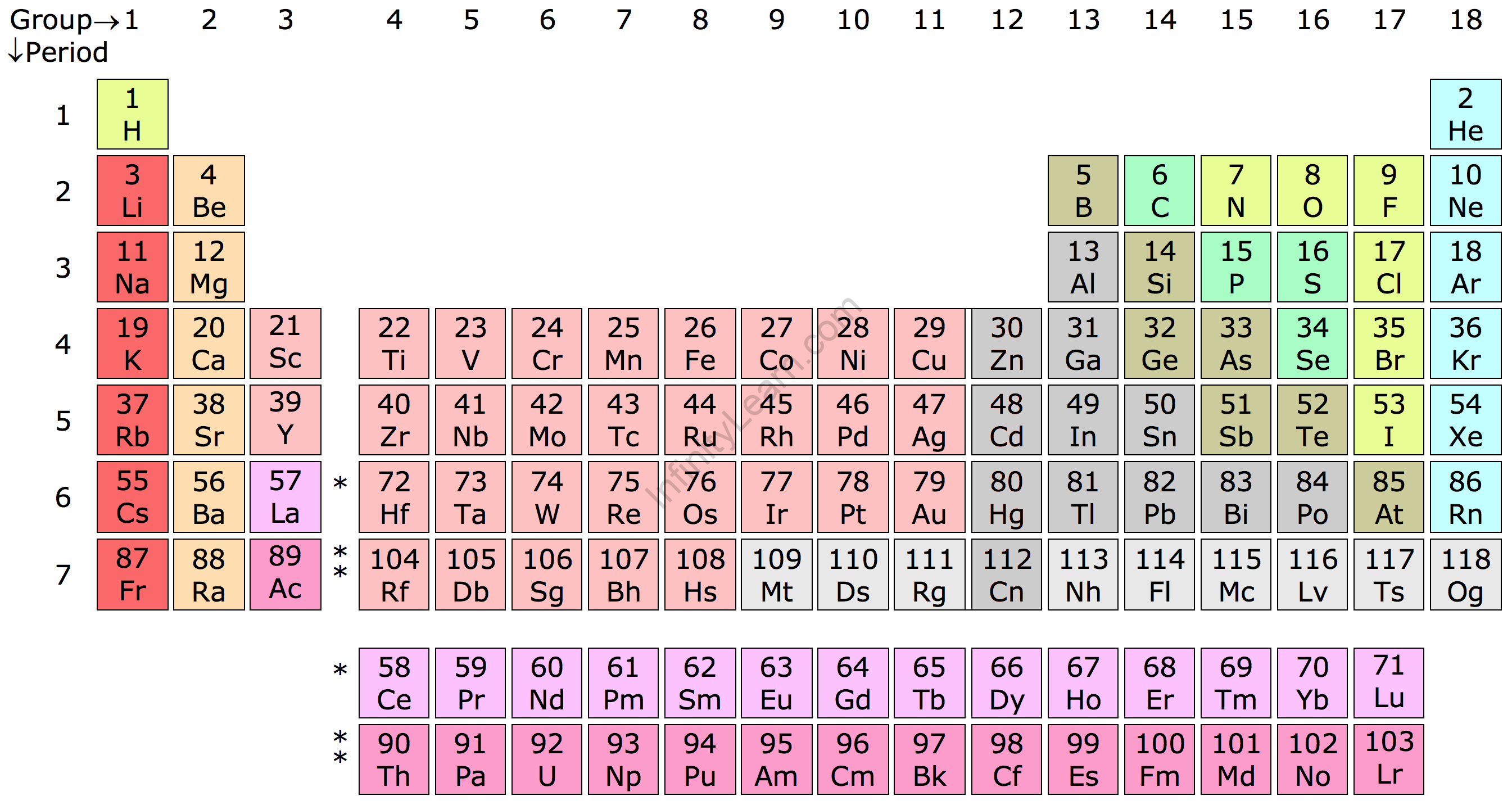Table of Contents

F Block Elements are what they sound like
The f orbital of an element in the F block is filled with electrons. The f orbital (1 to 14), the d orbital (0 to 1) of the penultimate energy level, and the orbital of the outermost all have electrons.
The filling of 4f and 5f orbitals corresponds to two series in the f block. The Ce to Lu 4f series and the Th to Lw 5f series are the components. The ‘f’ orbital is filled with 14 elements in each series.
F Block Elements in the Periodic Table: F block elements are arranged at the bottom of the periodic table separately. They’re a combination of the 6th and 7th sessions.
F Block Elements Classification
The f block’s constituents are further classified as follows:
The first group of elements is the lanthanides, which include elements with atomic numbers ranging from 57 to 71. These are elements that are not radioactive (except for promethium, which is radioactive).
The second group of elements is the actinides, which consist of atoms with atomic numbers ranging from 89 to 103. The bulk of these substances is radioactive in nature.
The following is a list of all the f block elements. The row that starts with Lanthanum contains all of the lanthanides, while the row that starts with Actinium has all of the actinides.
Inner Transition Elements of the F Block
In terms of transition metal naming, f block elements are referred to as inner transition elements since the f orbital is significantly closer to the centre than the d orbital.
F block elements’ properties
Lanthanides and other f-block chemical elements operate as active metals. As a result, these elements’ redox reaction potential is comparable to that of alkaline earth metals. All of the metals in the f-block act as powerful reducing agents, releasing hydrogen ions in chemical reactions with acids. Interstitial hydrides are formed when they absorb hydrogen ions from low pH scale fluids.
Although there are significant parallels between the two series of F-block parts, there are also significant differences. These discrepancies occur because 5f block elements have lower bond energies, ionisation energies, and less effective shielding electrons than 4f block elements. With increasing atomic numbers, the conventional electrode potentials for f-block lanthanides become increasingly positive. However, from actinium to uranium, electrode potentials increase more positive, then less positive until Americium.
Lanthanides’ Characteristic
- Lanthanides are soft metals that are silvery-white and have a silvery look.
- Their colour fades and their brightness decreases quickly when exposed to air.
- They have melting values between 1000 and 1200 degrees Celsius (Except Samarium, 1623K).
- Lanthanides are efficient conductors of heat and electricity.
- All are non-radioactive in nature, with the exception of Promethium.
- The atomic and ionic radii decrease from lanthanum to lutetium. It’s known as the lanthanoid contraction.
Characteristics of Actinides
- The components of the Actinide family have a silvery look.
- These elements are radioactive by nature.
- The reactivity of certain metals is amplified when they are finely divided.
- The atomic and ionic radii decrease from Actinium to Lawrencium. It’s referred to as actinoid contraction.
- In general, they have a +3 oxidation state. On the other hand, the first half of the series is known to exhibit higher oxidation states on a frequent basis.
What’s the Difference Between Lanthanides and Actinides?
- Lanthanoids are responsible for filling 4f-orbitals, while actinoids are responsible for filling 5f-orbitals. 4f electrons’ binding energy is lower than 5f electrons’ binding energy.The shielding effect of 5f-electrons is less effective than that of 4f-electrons.
- Lanthanoids have simple paramagnetic properties, but actinoids are more complex to explain.
- All lanthanides, with the exception of promethium, are non-radioactive in nature, whereas all actinide series elements are radioactive.
- Despite the fact that lanthanides do not produce oxo-cations, the actinide series contains numerous oxo-cations. Lanthanides produce less basic compounds than actinides, which produce very basic compounds.
Lanthanides and Actinides have a lot in common.
The filling of the (n-2) f subshell distinguishes the elements of the lanthanide and actinide series. They have nearly identical outermost electrical configurations and, as a result, have similar characteristics. The following are some notable parallels:
- Both have a strong +3 oxidation state.
- They are responsible for populating (n-2) f orbitals.
- They have a high electropositive charge and are extremely reactive.
- A decrease in atomic and ionic size is associated with an increase in atomic number.
- Both are magnetic in nature.
Lanthanide electronic configuration
Lanthanides have a general valence shell electronic configuration of [Xe] 4f0, 2 to 14 5d0 to 1 6s2. As a result, the electronic configuration of praseodymium’s valence shell is [Xe] 4f3 5d0 6s2.
FAQs
What is the difference between the 4f and 5f block elements?
The components are the Ce to Lu 4f series and the Th to Lw 5f series. In each series, the 'f' orbital is filled with 14 elements. The Periodic Table's Position of F Block Elements: The elements of the F block are listed separately at the bottom of the periodic table.
What are the different types of F-block transition elements?
The name f- blocks comes from the fact that the last electron enters the anti-penultimate shell's f-orbital. Inner transition elements are another name for these. The f block has two series that correspond to the filling of 4f and 5f orbitals. In most cases, the transition elements have an unfilled d-orbital.









